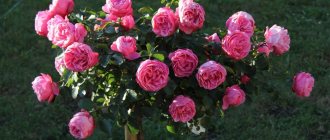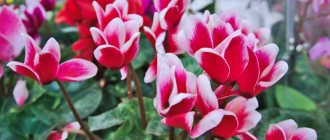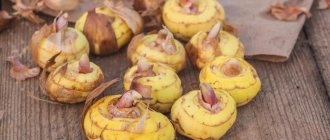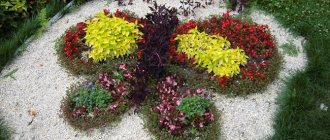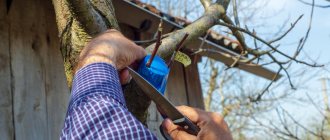Probably, almost every person knows what garden jasmine looks like and what it is. This plant is grown as an indoor plant by a very large number of gardeners. However, it can be grown in open ground. Many gardeners are happy to grow such a spectacular flower on their site. Jasmine bush can easily be confused with mock orange, and although these plants require almost the same care, they differ in appearance and also have significant differences in their origin. Thus, jasmine can be easily distinguished by its fragrant inflorescences, which are quite large in size.
However, in order to grow a spectacular and strong plant, you need to know how to plant it correctly in spring, and you also need to learn the rules for caring for garden jasmine. This kind of jasmine is a very beautiful plant, especially during flowering, when fragrant flowers bloom. But it requires good care, as well as proper planting.
Features of garden jasmine
It is quite possible to grow a plant such as garden jasmine in absolutely any area, but it should be remembered that it requires special care. Before you start growing this flower, you should first find out all the details about the care it needs. However, first you should learn more about this type of jasmine.
Garden jasmine comes from the Mediterranean. This plant has medicinal properties. However, most often it is grown as a decorative plant for decorating summer cottages and garden plots. This shrub has a very impressive lush crown. It is most beautiful during the flowering period, when yellow or white flowers bloom on the branches, collected in inflorescences. They are incredibly fragrant. Garden jasmine has a large number of different subspecies, which differ from each other in the size of the flowers. These plants stand out because they are able to adapt to almost any weather conditions.
Garden jasmine is quite undemanding about the planting site. So, it grows and develops very well in both sunny and shady places. It can be planted on both the southern and northern sides of the site. It tolerates both drought and high humidity quite well. Various insects, including most types of bees, love to collect nectar from the jasmine bush.
Application in the garden
Most often, mock orange is grown singly in gardens; with its flowering, the shrubs perfectly diversify the structure of flower beds and even the lawn. Ease of formation is a great advantage, which allows you to limit the bushes in height and width. The shrub is readily used to create hedges - formed and unformed, also in combination with other flowering shrubs.
Photo. Mock orange hedge
Mock orange should be planted in front of the house as an element that limits the view from the street, decorating the house, and also next to terraces and gazebos - as a source of shade and a wonderful aroma.
Cut branches can be used to make arrangements at home, which are not very durable, but create a very elegant decoration for the dining table.
You can also make a decoction of the leaves that effectively repels garden snails.
By the word “jasmine” most people mean mock orange. Although these plants do not have much in common, they both have a charming aroma. Therefore, it is worth adding a little natural aroma to your home or garden by planting this fragrant shrub. Mock oranges are easy to grow and make a strong statement in garden design.
The uniqueness of garden jasmine
During the flowering period, flowers contain a large amount of essential oils, but only in those that have bloomed recently. They have a beneficial effect on human well-being. Benzyl alcohol and jasmine benzyl acetate can normalize human sexual libido. The buds of such a plant are used to make a special decoction that has the ability to normalize the functioning of the digestive organs. Also, the substances contained in garden jasmine can cleanse the body of toxins, as well as strengthen the immune system. Any of the varieties of such jasmine contains substances that have medicinal properties. The jasmine bush will not only become a magnificent decoration for your garden, but can also significantly improve your health.
In order for cultivation to be successful, you need to know at what time and how exactly to plant this flower in open ground.
Main views with photos
Some species are the most popular among gardeners and summer residents.
Small-leaved jasmine
This is a fairly compact shrub that almost never reaches more than 100 centimeters in height. This plant has leaf blades that are quite large and curved. Its flowers have a very pleasant smell, reminiscent of strawberries.
Common crown jasmine
The shrub is quite large in size. So, it can reach a height of 250 to 300 centimeters. During the flowering period, such a jasmine bush is decorated with very large and beautiful inflorescences, which emit a pleasant sweetish smell. The leaf blades are painted a rich golden color.
Jasmine fluffy
This plant is recommended to be grown in parks or in fairly large areas. The bush can reach a height of 400 centimeters, and this is the tallest plant of all types of jasmine. However, the peculiarity of this plant is that its lovely flowers have no aroma. This species blooms quite late. Flowering lasts for 4 weeks.
Also very popular is the jasmine variety “Ermine Mantle”. This plant is quite compact and its height does not exceed 100 centimeters. Inflorescences are located along the entire length of the branches. Flowering lasts about 8 weeks.
A little about the most popular varieties of mock orange
Among the most popular varieties of jasmine on the market in the Moscow region are:
- ordinary, crown with white or cream flowers;
- small-leaved - with double inflorescences;
- fluffy - with creamy inflorescences of a light aroma.
For those who are interested in planting jasmine seedlings in the spring, we recommend paying attention to the following varieties of the crop:
- "Glacier";
- "Sambakam";
- "Ermine Mantle";
- "Etheronos";
- "Airborne";
- "Lemoine"
- "Shrenka."
If you want to enjoy the beauty and unsurpassed aroma of mock orange throughout the summer, you should think about planting different varieties. The common one, as a rule, blooms at the beginning of June, the small-leaved one at the end, and the Lemoina variety completes the flowering period.
Choosing a suitable landing site
These species and varieties can be found in many gardens and summer cottages. As a rule, garden jasmine is planted in open ground in the spring. In order for the plant to grow and develop normally, you need to know several important rules for both planting and caring for it. As a rule, planting different types and varieties of garden jasmine is practically no different.
Key points in choosing a suitable landing site:
- When choosing a suitable place on the site for this plant, you should definitely take into account the fact that it can adapt to almost any weather conditions. However, if you want your plant to have a spectacular appearance and bloom very profusely, then it should be planted in a place that is protected from strong drafts. The fact is that they have an extremely negative effect on this shrub. Also, garden jasmine grows and develops better in a well-lit place with enough direct sunlight.
- This shrub is recommended to be planted in close proximity to flowers that have a purple or deep blue color tint. For example, it will look great next to delphinium or lavender. Jasmine also grows well next to hydrangea or spirea.
- Experts advise planting garden jasmine in the spring. However, this procedure can be carried out in the fall.
Description of the bush
Mock orange is naturally distributed in East Asia, North America, Southern Europe, and the Caucasus. This is a plant of the Hydrangeaceae family.
Mock orange is also known as jasmine, but this is a misnomer. It is confused with jasmine because of the sweet, pronounced aroma of flowers. The shrub is grown in gardens individually and in groups and is suitable for forming hedges. The plant is planted in city parks and industrial centers; the bush is resistant to air pollution.
White fragrant flowers appear among the oppositely arranged serrated leaves from May to July, depending on the variety.
Mock orange flowers are usually solitary and develop in the months of May-June. But there are varieties and hybrids with flowers:
- terry (for example, “Snowbelle”);
- semi-double (for example, “Virginal”).
There are low varieties:
- "White Dwarf", reaching approximately 1.2 m;
- "Erectus" - 1-1.5 m tall.
Interesting varieties with two-color or yellow leaves - for example:
- "Variegatus";
- "Innocence"
Some varieties have later flowering dates, for example in June-July:
- "Kalina"
- "Virginal"
The varieties listed above usually have a strong aroma, which, unfortunately, cannot be said about the fluffy mock orange (the lower part of the leaves is covered with delicate hair), which blooms in early summer (June-July) with numerous white, very beautiful flowers, but completely odorless.
The smell of mock orange is compared to the blossoming of citrus trees and, therefore, to the English name of the shrub - mock orange or fake orange.
Selecting the optimal soil and planting
Garden jasmine, as mentioned above, is a fairly unpretentious plant. But for its best growth, you should pay more attention to the choice of soil, as well as to its immediate planting.
- Due to its unpretentiousness, such a shrub is able to take root and grow well in almost any soil. However, whenever possible, preference should be given to soil rich in nutrients. It should be remembered that jasmine roots react extremely negatively to excessive humidity, so the choice should be left on a piece of land located at a not very high elevation.
- Sand mixed with small stones should be poured into the hole prepared for planting. This layer will act as drainage. When planting a plant in spring, it is recommended to pour nitrophosphate in the amount of 50 grams into the hole. This will allow the plant to quickly take root in its new location.
- When the bush is planted, the soil will need to be compacted a little. Then the jasmine needs to be watered.
- In order for the plant to develop correctly, it is necessary to systematically add fertilizer to the soil.
Feeding rules
In order for your site to be decorated with a lush jasmine bush, you not only need to regularly care for it, but also systematically add fertilizer to the soil. It should be remembered that the very first fertilizing should be done only 12 months after planting the plant in open ground.
Garden jasmine needs minerals. To feed the plant, it is recommended to use a nutrient solution consisting of 1 liter of water and 5 grams of superphosphate. Add another 2.5 grams of urea and potassium sulphide into the resulting solution. After this, the solution is thoroughly mixed. It is used to fertilize this shrub.
Garden jasmine also needs organic fertilizers. So, it is recommended to use manure and humus for feeding. But it should be remembered that manure for feeding should be used only in diluted form, otherwise the plant’s root system may burn. It is recommended to dissolve manure in water in a ratio of 1:15.
Trimming Features
In order for the jasmine bush to be lush and fragrant, fertilizing alone is not enough; it also needs to be properly cared for.
In order for the crown to always look well-groomed and impressive, regular formative pruning should be carried out. Both summer residents and gardeners have several secrets and rules regarding this procedure:
- formative pruning must be carried out in spring, when the shrub is in a vegetative state;
- the longest branches need to be cut off completely, and short ones should be shortened by ½ part;
- for more abundant flowering, rejuvenating pruning is carried out, or rather, all empty branches are removed;
- in an adult bush, the central trunk needs to be cut to 45–50 centimeters, while the rest are removed entirely.
Every year it is necessary to inspect the bush and remove damaged and diseased branches.
Crown formation
Using formative pruning, the crown of garden jasmine is given the desired shape. Specimens that grow rapidly upward are limited in height, and their crowns are thinned out. This pruning is carried out at the end of March. It is carried out as needed. If the plant produces a relatively small increase and retains its decorative appearance for a long time, crown formation is carried out once every 3-4 years.
If the crown density is high, 3-4 oldest branches should be cut from the middle of the bush. They give little growth and interfere with the development of the entire plant. They are removed by sawing them out at ground level. Thick branches going inside the crown also need to be removed.
Very tall jasmine bushes in the garden do not look aesthetically pleasing. To limit their growth, you need to shorten all branches pointing upward by half. The side shoots that grow after such pruning will form many buds in the upper part of the bush.
Unsightly jasmine outlines are also easy to correct. To give the plant a uniform and regular shape, you need to shorten the largest and longest branches, cutting them in half. The remaining shoots should not be shortened in order to obtain a profusely flowering bush this year.
Preparing for winter
In order for the plant not to die in winter, it must be properly prepared for this difficult period. To do this, you need to perform a few very simple manipulations:
- It should be remembered that adult specimens are more frost-resistant than young ones. Therefore, it is quite possible not to prepare adult plants for the winter period. However, those jasmines that are still quite young need this procedure.
- When the bush fades, it should be wrapped in material specially designed for this. You can also use regular straw for this purpose.
- To prevent jasmine roots from being damaged during the winter cold, in the autumn you need to dig up the soil around the trunk and do not forget to add compost to it.
- If desired, this shrub can be transplanted to a new place in the spring.
Reproduction methods
It is very easy to propagate garden jasmine. So, there are several ways:
- Seeds. Seeds are sown both in open ground and in a box at home (growing through seedlings).
- Cuttings. It is recommended to cut cuttings in the first days of June. They are then planted either in open soil or in a greenhouse.
- Escape. In spring, shoots should be prepared by separating them from the mother plant. The choice should be made on the strongest shoots. After they overwinter, with the onset of spring they are transplanted to a permanent place.
- Dividing the root system. This is not the most popular method of reproduction. It is recommended to divide in the autumn.
Unpretentious plants for the garden How to propagate mock orange or garden jasmine
You should also be sure to remember that indoor and garden jasmine are different crops, and each of them requires special care.
Deadlines
Jasmine can be planted twice a year - in spring and autumn. There are no strict planting dates, so each gardener chooses the appropriate time based on his climate. In mid-latitudes, shrubs begin to be planted in mid-May, and in the southern regions and the Black Earth Region - at the end of April. As for areas with sharply continental and temperate climates, planting jasmine can only begin if the threat of return frosts has completely passed.
For the middle zone, including the Moscow region, this will be the end of May, and for others - the beginning of June. However, experienced summer residents claim that young jasmine cuttings can be planted throughout the summer, as they take root well and have time to gain strength before the onset of cold weather. Autumn planting of jasmine is carried out in late September - early October, which also depends on the climate.
According to most gardeners, seedlings planted in spring and summer take root better than those planted in autumn.
